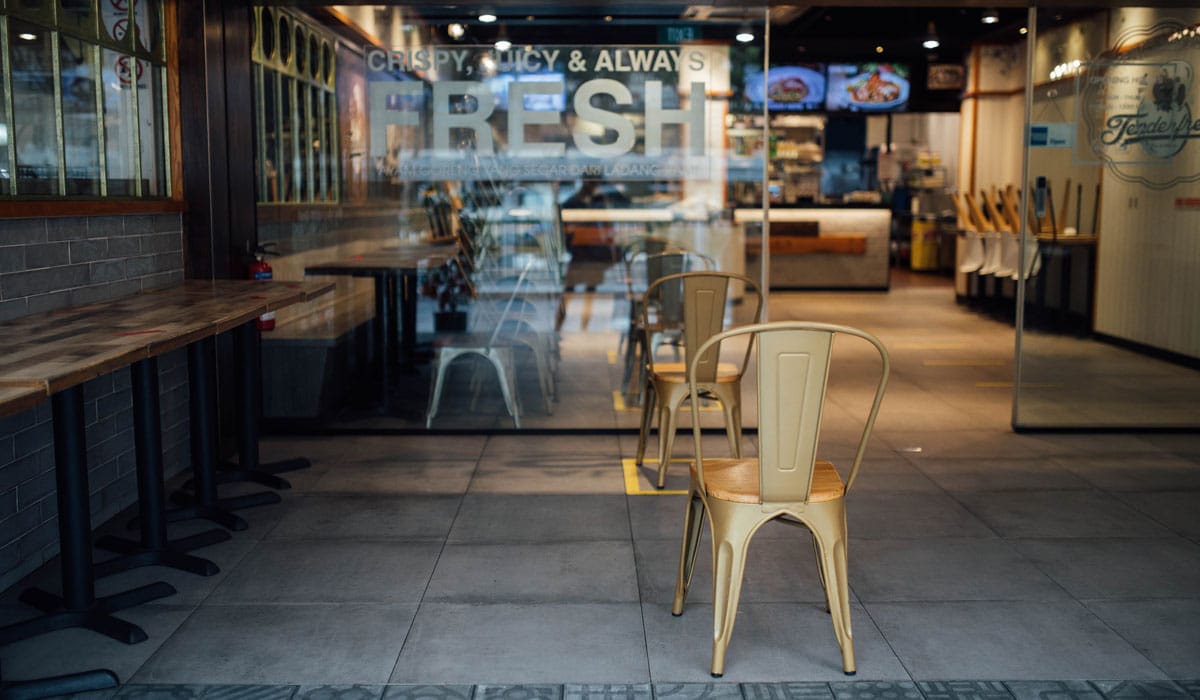In the United States alone, there are a million restaurants that employ over 15 million people. Additionally, nearly 70 percent of these restaurants are small, independent businesses that are the backbone of their local communities. It is critical for those of us in the hospitality industry to band together and share best practices in the spirit of crisis management to help ensure that we come through this stronger than before and continue to create lasting careers for our employees.
Build your company’s digital ordering infrastructure now
Making any type of capital expenditure is counterintuitive during a period where cash flow is king, but this is an investment that can be remarkably inexpensive and will have a significant impact on your company’s ability to compete over the next 18–24 months. Consumer demand for frictionless digital ordering with both pickup and delivery options has been increasing for the past 10 years. With the rapid ascent of remote work and the prolonged realities of social distancing, the path blazed by sweetgreen, Chipotle, and Starbucks will now be open for even the smallest operators. There are a multitude of startup app developers that will rapidly (4–6 weeks) and at modest expense ($1,500 to $3,000) build and launch a branded mobile ordering app. Take this time of inactivity to build the app, install store shelving, and create marketing collateral so on the first day of your stores’ reactivation you’re also launching your digital ordering platform.
Incorporate CDC guidance into your safety protocols and standardize those protocols through both execution and evaluation systems
Improve your safety protocols and standards with the available CDC guidance. Your restaurants already have food safety practices in place, but those practices are rapidly evolving to incorporate the pandemic realities. Consumer evaluation of your brand’s preparedness will greatly impact how they view both your brands’ safety and level of social responsibility. The top changes to safety practices will include the regular deployment of face masks, social distancing dots to ensure correct levels of distancing between customers, sufficient spacing between tables to ensure 6′ distance for dine-in guests, and increased usage of disinfectant on high touch areas of your restaurants. Rolling these changes out to your staff also requires you have the correct systems in place to consistently execute but to also monitor operational adherence.
Adjust your product offerings to accommodate new consumer needs
Assess your menu and identify opportunities for items that are designed for a new environment in which consumers could be reluctant to dine in or around others for a prolonged period of time. Launch catering items that are individually packaged and “grab and go,” like lunch boxes, or family packs for dining at home.
Plan activation events for your businesses’ new revenue channels
Many operators have adapted to the dine-in prohibitions with curbside, drive thru, and delivery businesses. These new business models need to be launched with a promotional program the same way as any other business. At one of our chains, Blackwood BBQ, the company invested into hand-painted signs, tents, and lights to launch a new pop-up drive thru operation. To build awareness in the community, they are executing a promotional launch day that simultaneously raises money for their #feedfirstresponders program.
Complete an operations document review and improvement plan
If your company doesn’t have a designated ops services manager or department, this is the best time for operational leadership to review and update all the training documents, job aids, checklists, and recipes that are likely in need of an update. If those tools are not in place, this is a great time to build these tools. While every day right now is a challenge, due to the level of uncertainty and stress created by the pandemic, your team will be glad this essential work was done when operations do resume. Relaunching operations will be an all-hands on deck effort for an extended period of time since teams will need to be partially rebuilt and the machinery of the operations is brought back into high gear. Having clean and updated ops docs will make the training and operations reactivation period much easier on your team.
Run low, mid, and high cash flow forecasts for 25, 50, and 75 percent of previously forecasted sales
The zero revenue or nominal revenue lockdown period we’re currently in will prove to be much easier to understand than what all of our companies are entering into as the economy comes back to life. As staff is brought back onto payroll and the operating expenses of the business begin to generate, many of our businesses will go through the highest-risk period of this crisis. Understanding your company’s burn-rate and the unit economics of the different scenarios on the front-end, will enable proper labor planning, particularly in the context of how to best deploy PPP funds.
Optimize your COGS now
The pressures on occupancy and labor expenses will only become greater in the post-COVID-19 lower sales environment. Making all possible strategic changes to menu-pricing, PMIX optimization, packaging, and portioning that can move the needle on the COGS line will be more important than ever when your restaurants return to operations.
Communicate with your employees
There’s likely a hesitancy to establish a routine level of communication with your employees as the uncertainty of the crisis continues but we cannot leave people out of the loop. Phone calls are better than emails. Write down your bullet points, start dialing, and commit to routine communication. Your employees will never forget it.
Franklin Buchanan is a partner at Venture Kitchen, a creator and accelerator of early stage, high growth restaurant concepts such as Blackwood BBQ, INVICTO, and Naansense.

